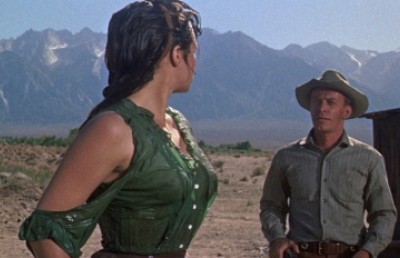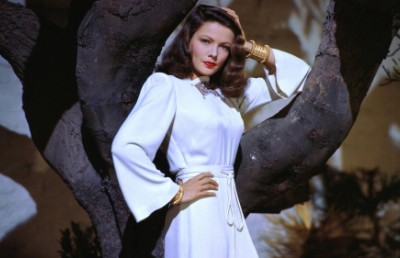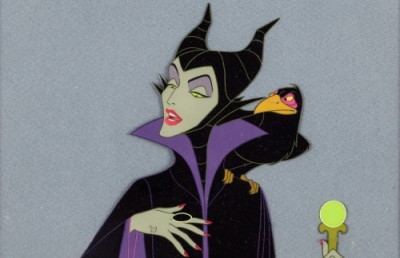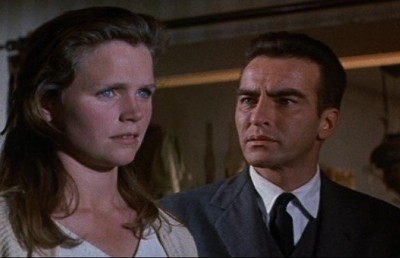Forty Guns (Samuel Fuller, 1951)
_1000_420_90_c1.jpg)
‘Last time I killed a man was 10 years ago, a boy. He was no good like your brother but he was still a boy and I killed him. I could have made a crippling shot but I didn’t. Did you ever see a dead boy’s eyes in the sky? Threw his gun in the west. You know why I hate to get into fights? I can’t miss. Am I talking too much? In my heart I’ve always asked forgiveness before I kill just like an Indian asking for forgiveness from an animal before the slaughter. You can’t ask after you kill, it’s too late then. I didn’t come here to talk about that, I came to talk about Brockie. He put Charlie Savage’s corpse on public display in a store window. A boy who do a thing like that is dead, or nearly dead, but there’s still time.’
-Griff Bonnell’s lament-filled plea to Brockie’s iron-fisted rich rancher sister Jessica
While it’s true that, on a double feature viewing night that started with a mostly somnambulant (if somehow still engaging – revealing again, how the camera loves some people no matter how little they care) Charles Bronson returning as vigilante Paul Kersey in the reactionary over-the-top – and growing more outlandish with each entry — cavalcade of rape, violence and explosions known as Death Wish 3 – with shameless sleazemeister Michael Winner’s pedestrian low-brow directorial skills on full display – might give pause for one to consider that anything identified as the evening’s second film was likely to feel so refreshing as to be potentially visionary if displaying even the slightest hint of a directorial flair, on the other hand, this can be easily counterbalanced against the fact that my (and my screening compadres) continuing Sam Fuller film excursions have revealed the war vet and one-time newspaper man, a director (and storyteller) of tales exploring toughened individuals, to have a marvellously iconoclastic cinematic voice to share (no surprise that a brilliant 70’s director like Martin Scorsese thinks of him as a huge influence)… and Forty Guns more than holds up to that scrutiny.
From the very first scene, as semi-lawman Griff Bonnell (Barry Sullivan, a long-time Hollywood actor, who, while having an extensive career that spanned classic 40’s American film right up into 70’s New Hollywood — including a Western with Sam Peckinpah — will always be Captain Mark Markary in Mario Bava’s Planet of the Vampires to me) and his brothers, Wes and Chico, riding the high country towards the town of Tombstone, when, suddenly, a seemingly never-ending horde of gunmen on horseback (numbering, we’ll soon learn, the titular forty), heading in the opposite direction pass around them in double file, without a word exchanged, it’s immediately clear (with or without the immediately preceding presence of Death Wish 3 that we’re in the hands of a cinematic storyteller we can trust; first, carefully initiating the moment, as the Bonnell brothers stop their horse-drawn carriage to try and figure out what it is they’re seeing approaching in the distance, then slowly building towards a crescendo, through a minimum of words and a masterful combination of loudening – to the point of overwhelming — hoof-beats and carefully composed (black & white) images (including, as he does throughout the film, capturing the impressive landscape around them in the film’s cinemascope photography) as the men and their horses gallop imposingly past. At first blush, it may play like a pre-credits sequence pre-amble, yet it not only carefully and evocatively sets the stage for what’s to come, it also perfectly positions, in sublime visual terms, the two camps within the narrative (Jessica Drummond’s forty gunmen ranch hands as the physically menacing rulers, Bonnell and his brothers the overmatched, though steadfast, interlopers).
_630_466_90.jpg)
Forty Guns is one of Fuller’s bigger budgeted films and, wow, does he maximize the results. While ambitious scenes, including tough, unsentimental characters defined through stylistic camera movement and framing, were always part of his cannon, a film like Forty Guns lets him really explore, in grander terms, his cinematic abilities (especially when you have a shooting schedule longer than the staggering, though not unusual for him, ten days for films such as the brilliant, tough-minded war film The Steel Helmet). Already mentioning the brilliant opening set-up, there’s also later moments, such as the long, somber scene (with minimal camera cuts) that eventually leads to the town’s ineffectual sheriff (character actor vet Dean Jagger) committing suicide in his cell rather than take responsibility for his own corruption, and then also the consistent long takes, with the camera moving back and forth capturing different incidents that add up to a narrative whole, reinforcing Fuller’s complete control and understanding of cinematic language, even more so when given the time and wherewithal to ply his trade as he is here.
I would be also be hard pressed to believe that title designer Maurice Binder, celebrated as the innovator of the swirling gun site capturing agent 007 within its point of view for the by now familiar, though always legendary, James Bond franchise opening credits, hadn’t been influenced by the Fuller shot in Forty Guns of brother Wes (played by Gene Barry, another valuable old school performer who for me, like Sullivan, is always going to be known for a single favoured role – that of the benevolent bespectacled doctor who witnesses the world violently turned upside down from an alien invasion in the first, and best, War of the Worlds adaption from 1953) looking through his gun site at the girl of his dreams, the gorgeous tomboy daughter of the local gunsmith (Eve Brent). Perhaps one could question the iffy underlying notions behind it being a beautiful woman placed in its sites by the man who will marry her (especially as the obvious potential underlying male controlling themes are never really played out further than this moment), rather than a male 007 agent who clearly places himself in danger as part of his profession, but its a striking composition nonetheless, standing out for its sudden audaciousness.
_630_270_90.jpg)
Griff’s mournful (and brilliantly modulated) speech hints at the toll on the gunfighter as he faces, again and again, the death he creates (something Clint Eastwood would explore in greater depth – in many ways making a final culminating statement on it, in fact — with his tortured retired gunslinger William Munny in his brilliant 1992 Western swan song Unforgiven reveals yet again how the cynical and critical perspectives of what is considered the modern ‘revisionist western’, in fact, were embedded in the very fabric of the Hollywood Western almost from the very beginning (certainly by the time of the classic westerns of John Ford and Howard Hawks, two right-leaning directors who were admirably always able to choose story dynamics over personal politics; a tradition that Eastwood himself carried forward – at least in the best of his films).
Even the discussion between the falling-in-love rancher Jessica Drummond (Barbara Stanwyck) and Griff (captured in top form romantic Hollywood style by Fuller) as they consider a future together and mournfully discuss how the time of the gunslinger and the old law of the wild west was coming to an end (as the railroad and ‘civilized society’ is moving in), is clearly prevalent – sometimes in the background, other times foregrounded — in not only Forty Guns but most of the Hollywood westerns starting even in the 30’s. The conflict between the dying values of the wild west against the emerging modern power (namely, faceless corporate corruption) supplanting it, treated as some later emerging tenet of the “revisionist western’, has been there all along (as well as bold criticisms of the myth of the solitary male saviour figure of the western tradition himself – perhaps the greatest example being Howard Hawks’ greatest western Red River starring John Wayne as the authority figure who must be vanquished for the order of newbie leaders like Montgomery Clift to thrive, and that was already released way back in 1948).
_440_346_90.jpg)
It’s fascinating to consider that it was two legendary independent-spirited, maverick filmmakers, Nicholas Ray with Johnny Guitar and Sam Fuller with Forty Guns who, in the 1950’s, created westerns with narratives amazingly centered around two tough bitch powerful female ranchers, played by legendary take-no-prisoners thespians (Joan Crawford in Guitar and Barbara Stanwyck in Forty Guns). It speaks to the progressiveness (and the willingness to fight) of both directors, especially having the women being entirely apologetic of not only their position, but how they got there in the first place (Crawford’s Emma in Guitar is openly shown to have had to engage with a lot of unattractive rich suitors). Ray’s film might have been the much more openly and daringly feminist-minded, putting at the fore Emma’s struggles against the patriarchal system – and the women who embrace it – Stanwyck’s powerful position alone in Fuller’s effort is also worthy (especially in a post-war decade that pushed determinedly for conformity and the safety of the nuclear family, where “Father Knows Best” was the number one television show across the land). Saying all that, Hollywood is still about creating myth and larger than life wonder, and I can’t imagine Stanwyck would be thrilled with how unflatteringly pock-marked her skin looks in close-up (even through the standard romantic gauze filter), a problem I’m sure that has arisen from the new blu-ray transfer (another argument against these transfers showing us more than the filmmakers, designing as they did for 35mm projection, meant the audience to see); I’m sure the film’s cinematographer Joseph F. Biroc would have been equally as aghast as Stanwyck.
_500_358_90.jpg)
If there is a problem with Forty Guns (other than the slightly laughable quality of the numerous scenes of the men taking bathes together as one of them strums his guitar and sings a soundtrack song to them) it’s the final resolution of the Stanwyck character willingly acquiescing to a subservient role to Griff by running after his carriage as he leaves town. Both have lost a brother to violence, true, but having this ‘happy ending’ indicate a re-establishment of the patriarchal unit as a way back to order, and movement against chaos, seems a cop-out after the strength and equality shared between the two characters throughout the narrative.
I’ve read Fuller describing his original ending, which was vehemently disallowed by the studios, in which Griff is forced to shoot and kill Jessica as the only way to take vengeance against her brother, the cowardly Brockie (John Ericson) who killed Griff’s brother, who holds his sister before him as a physical shield against Griff. The fact that Fuller was furious he couldn’t go with this ending and was forced to go with the studio’s version, does confirm Fuller’s maturity and willingness to challenge the status quo as a filmmaker… but yet… I don’t know. I’d like to have seen Griff ride off, and Jessica stays behind (a little mournfully perhaps but she’ll get over it) to continue in her powerful position as the town’s rancher. Even better yet? Griff stays… as a lover, yes, and a life partner too… but also as a ranch hand working under her.
Also of interest: Elaine Lennon’s two-part essay on the Westerns of Barbara Stanwyck:














